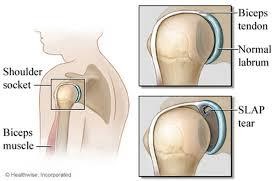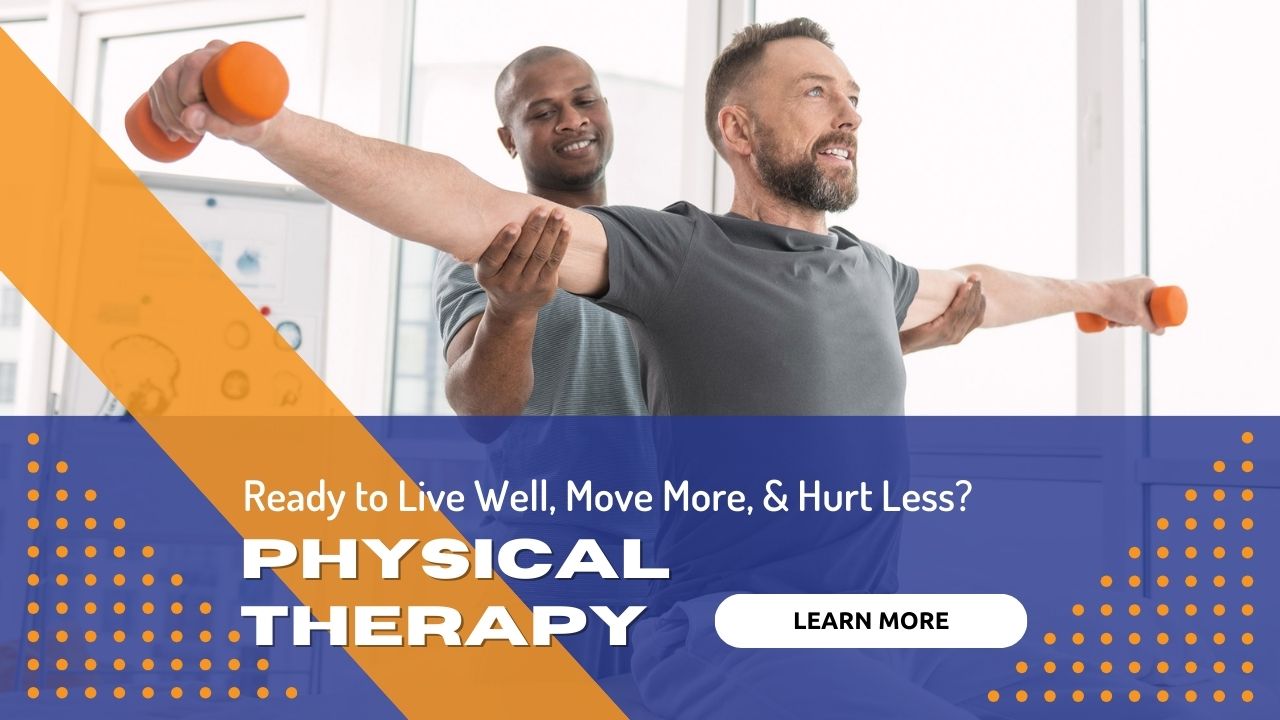SLAP Tear
Shoulder Anatomy

The shoulder socket is not very deep naturally so, the labrum helps with its stability by forming a full ring around the socket, which improves the depth of the joint. It is important to note that one of the bicep tendons is attached to the top of the labrum.
What is a SLAP Tear?
A SLAP Tear is an injury at the top portion of the labrum. SLAP stands for “Superior Labral tear Anterior to Posterior.” It will usually involve the bicep tendon. There are several types of SLAP Tears, but the differences are mainly in severity and location. SLAP Tears are usually (but not always) traumatic in nature. Patients’ reports vary but they usually consist of one of the following; they fell on the arm, lifted something heavy awkwardly, or got hit in the arm during a collision with a person or an object. There is some evidence that heavy overhead use can lead to a SLAP injury
What does a SLAP Tear Feel Like?
SLAP Tears are usually painful with patients reporting a consistent dull ache, which can increase when they move their arms wrongly. Remember, the labrum provides stability and a SLAP Tear decreases that stability significantly. Usually, a patient will complain of instability, catching and popping, or shifting of their shoulder. Overall, many patients report that their shoulder feels like it may pop out of their joint. Normal activities that require the shoulder to elevate or pick up any weight may become difficult. Reaching across the body to the opposite side may also be difficult. The biceps may also be painful since the bicep tendon attaches to the labrum and is usually involved. As a result, strength loss is expected in the biceps and the shoulder as a whole.
I think I may have really injured my shoulder. Now what?
SLAP Tears or Shoulder Injuries in general can be present in a variety of ways. It is important to let your doctor or physical therapist properly assess your shoulder injury first. By looking at the available movement and strength we can better decide on what the next step of care may be. We may need an image in the way of an (MRI) in order to get more information on the severity of the injury. There is a fair amount of research that shows that physical therapy can help restore shoulder function and strength even with a SLAP Tear1. We do this by strengthening the surrounding musculature to make up for the loss of stability. However, if you do not improve enough with physical therapy, then we will work with an orthopedic surgeon to discuss a more aggressive approach such as surgery. Any physical therapy prior to surgery will help with the rehab process after surgery because you will be stronger with better available motion in the shoulder
How can a Physical Therapist Help with a SLAP Tear?
Physical therapy after SLAP repair surgery is vital to the recovery of full shoulder function. A good physical therapist will protect the surgery to allow it to heal properly, while helping to safely restore full joint motion and strength. We slowly begin to shift the rehab from restoring range of motion to strengthening the shoulder stabilizer muscles, which will help reinforce the surgery. A patient should expect about 20 weeks of therapy during which, they will gradually wean from a sling to full use of the shoulder during that time. Most patients return to full activity levels within a year, although some higher-level impact activities may take longer due to safety concerns.
- SLAP Lesions: An Update on Recognition and Treatment, Christopher C. Dodson and David W. Altchek Journal of Orthopaedic & Sports Physical Therapy 2009 39:2, 71-80





